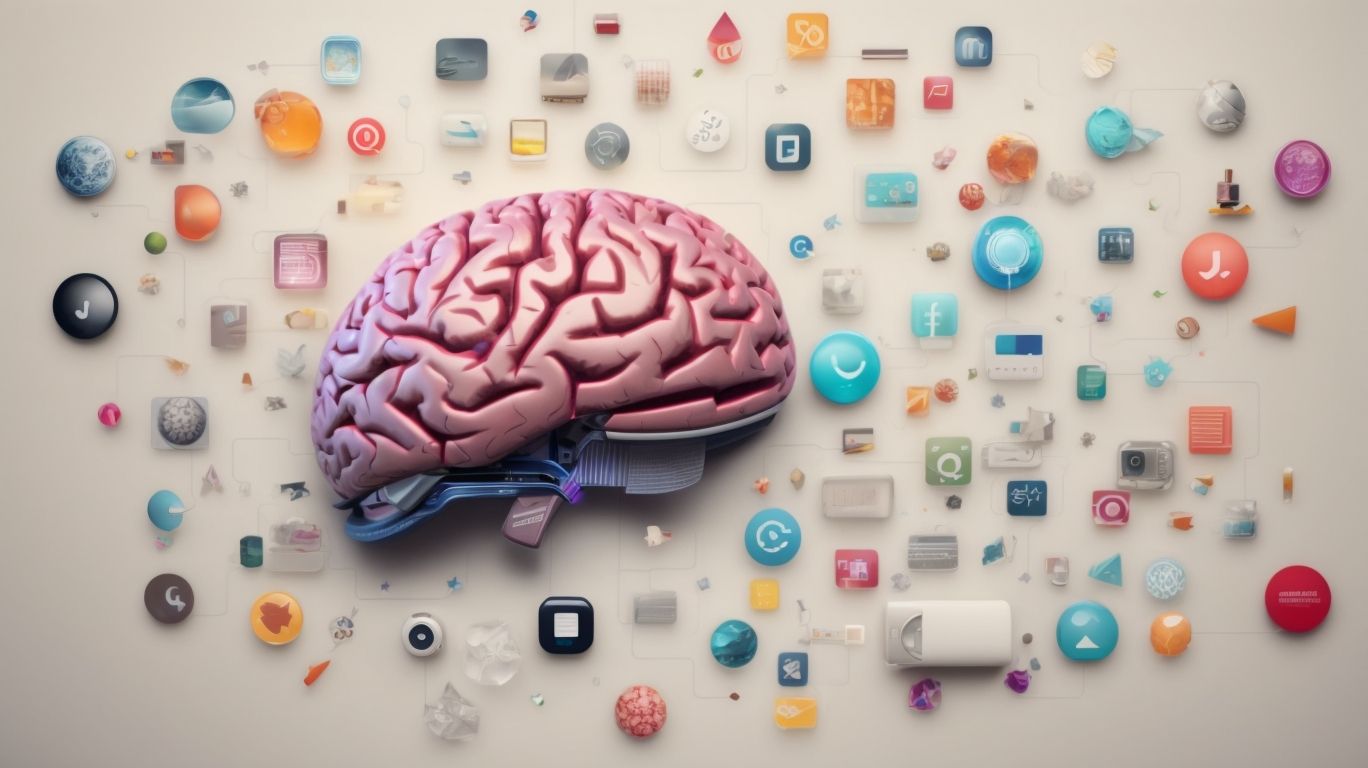Long term memory is a fascinating aspect of human cognition that plays a crucial role in our everyday lives. In AP Psychology, understanding the complexities of long term memory is essential for comprehending how information is stored and retrieved in the brain.
This article will delve into the various types of long term memory, the factors that influence its function, and techniques for improving memory retention. We will also explore the limitations of long term memory and methods for assessing its capacity. Stay tuned to enhance your knowledge of this key concept in AP Psychology!
Contents
- 1 What is Long Term Memory?
- 2 How is Long Term Memory Different from Short Term Memory?
- 3 What Are the Types of Long Term Memory?
- 4 What Factors Affect Long Term Memory?
- 5 How Can Long Term Memory Be Improved?
- 6 What Are the Limitations of Long Term Memory?
- 7 How Can Long Term Memory Be Assessed?
- 8 Why is Understanding Long Term Memory Important in AP Psychology?
- 9 Frequently Asked Questions
- 9.1 What is long term memory in AP Psychology?
- 9.2 How much information can long term memory store in AP Psychology?
- 9.3 What factors can affect the capacity of long term memory in AP Psychology?
- 9.4 How does long term memory develop in AP Psychology?
- 9.5 What are some techniques for exploring the capacity of long term memory in AP Psychology?
- 9.6 What is the significance of understanding the capacity for long term memory in AP Psychology?
What is Long Term Memory?
Long-term memory is a fundamental component of the human memory system, responsible for the encoding, storage, and retrieval of information over extended periods.
When information is encoded in long-term memory, it undergoes a complex process where it is transformed for storage. Synapses play a crucial role in this encoding process, as they form connections between neurons in the brain. These connections are strengthened through repeated exposure or rehearsal, contributing to the formation of memories.
The storage phase involves the consolidation of these memories, with the hippocampus playing a key role in transferring information from short-term to long-term memory. Retrieval is the process of accessing stored information when needed, with cues triggering memory recall from the vast repository of long-term memories.
How is Long Term Memory Different from Short Term Memory?
Long-term memory differs from short-term memory in its capacity for durable retention, enabling the storage of information over extended periods compared to the temporary nature of short-term memory.
Short-term memory, also known as working memory, has a limited capacity to hold a small amount of information for a short duration typically around 20-30 seconds. On the other hand, long-term memory has an immense capacity to store vast amounts of information potentially for a lifetime. The encoding processes in short-term memory mostly rely on acoustic or visual encoding, whereas long-term memory involves semantic encoding, forming complex neural connections with the aid of neurotransmitters like dopamine and glutamate. This process contributes to the creation of explicit memories, which are consciously accessed and recalled.
What Are the Types of Long Term Memory?
Long-term memory encompasses explicit memories, which are consciously recalled, and implicit memories, which influence behavior without conscious awareness.
Explicit memories are linked to the recollection of specific events, known as episodic memories, and factual knowledge, referred to as semantic memories. These memories are stored in the hippocampus and can be retrieved through conscious effort.
On the other hand, implicit memories are associated with procedural memory, such as skills and habits, stored in different regions like the cerebellum and basal ganglia, and are often recalled automatically through performance rather than intentional retrieval.
Explicit Memory
Explicit memory, involving conscious recall of past events and information, is heavily associated with the hippocampus in the brain, responsible for forming and storing these memories.
The process of encoding plays a crucial role in converting these experiences into lasting memories. It involves the initial learning of information which is then stored in the brain. Semantic encoding, in particular, emphasizes the meaning of the information being encoded, contributing to stronger memory recall. In terms of retrieval, the hippocampus aids in accessing these memorized details, allowing for the conscious recall of events. Even with the hippocampus facilitating retrieval, instances of source amnesia may occur, where the origin of a memory is forgotten, highlighting the complex nature of explicit memory processes.
Implicit Memory
Implicit memory operates beyond conscious awareness, influencing behaviors and skills through procedural memory, aiding in tasks and actions without explicit recall of how they were learned.
Procedural memory, a key component of implicit memory, enables individuals to perform tasks automatically, such as riding a bike or typing on a keyboard, without needing to consciously think about each step involved. Moreover, priming, another aspect of implicit memory, can subtly influence behavior based on previous exposure to related stimuli, even if not consciously remembered.
Associative learning, a cognitive process linked to implicit memory, involves forming connections between stimuli and responses, influencing future behavior. For example, if someone had a positive experience at a particular restaurant, their mood-congruent memory may lead them to feel more positively inclined towards that place in the future.
What Factors Affect Long Term Memory?
Various factors influence long-term memory, including age, emotional state, and the depth of processing during encoding, all contributing to the formation and retrieval of memories.
Age plays a significant role in memory retention, with studies showing that older individuals may experience challenges in consolidating new memories compared to younger counterparts. Emotional state can heavily influence memory formation; positive or negative emotional stimuli can enhance memory recall. The depth of processing during encoding, such as using semantic encoding techniques, affects how well memories are stored. Emotional significance can impact memory consolidation, as feelings of fear or joy can trigger the release of stress hormones that influence long-term memory. Brain damage can severely impair memory function, highlighting the delicate nature of memory processes.
Age
Age plays a crucial role in long-term memory, with memory abilities evolving across the lifespan, influenced by developmental changes and cognitive processes.
During childhood, the brain is like a sponge, rapidly absorbing new information and forming foundational memories that shape cognitive development. As individuals transition into adolescence and early adulthood, their memory capacity expands, enabling them to process complex information more efficiently. As people reach their senior years, they may experience a decline in memory function due to natural aging processes, such as reduced brain plasticity and slower information processing speed.
It is essential for older adults to engage in memory enhancement strategies to maintain and improve their cognitive abilities. These strategies include regular mental exercises, such as puzzles or memory games, healthy lifestyle choices like proper nutrition and physical activity, and social interactions that stimulate the brain. By adopting these approaches, individuals can mitigate age-related memory decline and promote overall brain health.
Emotional State
Emotional state significantly impacts long-term memory, with emotionally charged events and experiences often enhancing memory consolidation and retrieval processes.
One of the key mechanisms through which emotions influence memory is the role of stress hormones. When individuals experience high levels of stress, particularly from intense emotions such as fear or anxiety, the release of cortisol can impact memory consolidation. This can lead to both positive and negative effects on memory, depending on the context of the emotional experience.
The phenomenon of mood-congruent memory suggests that individuals are more likely to remember information that is consistent with their current emotional state. For instance, a person feeling sad is more likely to recall sad memories. Flashbulb memories, which are highly vivid and detailed recollections of emotionally significant events, also demonstrate the strong link between emotions and memory formation.
It is important to note that emotions can sometimes lead to distortions in memory, such as source amnesia, where individuals cannot remember where or how they learned certain information due to the emotional impact of the event.
Rehearsal and Repetition
Rehearsal and repetition are essential strategies for enhancing long-term memory, reinforcing neural connections and facilitating the transfer of information from short-term to long-term memory stores.
The spacing effect, a well-studied phenomenon in cognitive psychology, highlights the importance of distributing learning over time. It suggests that structuring study sessions strategically, with intervals between repetitions, leads to better retention. When individuals engage in spaced repetition, they leverage the brain’s ability to solidify memories through repeated exposure at optimal intervals.
Plus spaced repetition, employing cognitive rehearsal techniques such as elaborative rehearsal can deepen understanding and retention. This technique involves linking new information to prior knowledge, making it more meaningful and easier to remember. Mnemonic devices and chunking are commonly used strategies to enhance memory encoding and recall, allowing individuals to organize information into manageable chunks through associations or patterns.
How Can Long Term Memory Be Improved?
Enhancing long-term memory involves utilizing association techniques and visualization strategies to create meaningful connections and vivid mental images that aid in memory encoding and retrieval.
In terms of association techniques, creating links between new information and existing knowledge can significantly improve retention. For instance, creating hierarchies can help in organizing concepts into a structured framework, making it easier for the brain to store and recall information.
Breaking down complex information into smaller chunks can enhance memory capacity and facilitate better recall. Mnemonic devices such as acronyms or rhymes are valuable tools for encoding information in a memorable way, reinforcing the retrieval process.
Association Techniques
Association techniques involve linking new information to existing knowledge or creating mnemonic devices to enhance memory retention and retrieval in long-term memory.
One prominent technique used in memory enhancement is the method of creating associations, where individuals connect new information with pre-existing knowledge or experiences. By doing so, the brain forms stronger neural connections, making it easier to recall the information later.
Another effective approach is the utilization of mnemonic devices, such as acronyms or visualization techniques, to aid in memorization. These devices provide a structured way to organize and remember complex information, helping to combat persistent memory issues like proactive interference and retroactive interference.
By actively engaging in association techniques, individuals can significantly improve their ability to retain and recall information.”
Visualization Techniques
Visualization techniques leverage the power of mental imagery and spatial memory to encode information in long-term memory effectively, fostering stronger memory associations and recall.
Visualizing information stimulates iconic memory , a form of sensory memory that retains visual impressions for a brief duration before transferring them to working memory for further processing. By engaging iconic memory through visualization, individuals can enhance their ability to encode and recall visual details with more precision.
Visual imagery plays a crucial role in memory consolidation by reinforcing neural connections associated with the encoded information. When individuals create vivid visual representations of new knowledge or experiences, they facilitate the formation of durable memory traces, enabling easier retrieval through cues that trigger deja vu sensations.
Chunking Information
Chunking information involves organizing data into manageable units or meaningful clusters, aiding in memory encoding and retrieval by simplifying complex information for long-term storage.
By breaking down large amounts of information into smaller, digestible parts, the process of chunking allows the brain to better manage the data and make sense of it. This technique not only enhances encoding but also facilitates quicker retrieval when needed. Organizing information into hierarchical structures creates logical connections between related concepts, leading to a more efficient recall process. In essence, effective chunking and organization provide a roadmap for the brain to navigate through the vast maze of data, improving overall memory retention and cognition.
What Are the Limitations of Long Term Memory?
Long-term memory encounters limitations such as forgetting and interference, where retrieval challenges and competing memories can impede accurate recollection of stored information.
Forgetting mechanisms play a significant role in the constraints faced by long-term memory. These mechanisms involve the decay of memories over time due to disuse or interference, leading to the inability to retrieve specific details. Proactive interference occurs when previously learned information hinders the recall of newer information, while retroactive interference involves the disruption of older memories by newly acquired knowledge.
- Repression is another crucial concept in memory constraints, where distressing memories are involuntarily kept out of conscious awareness to protect the individual from emotional discomfort.
- Cognitive interview techniques have been developed to enhance memory recall by utilizing strategies like reinstating the context of the event and encouraging the individual to report all details, reducing the impact of memory construction issues.
Forgetting and Memory Decay
Forgetting and memory decay are natural processes in long-term memory, involving the gradual loss of stored information due to retrieval failures or interference from newly acquired knowledge.
Memory researchers have proposed various theories to explain forgetting, including decay theories and interference theories.
In decay theories, it is suggested that memories fade away over time when they are not accessed or used frequently.
Retrieval cues play a crucial role in memory recall, as they can trigger associations with stored information and enhance retrieval.
Factors such as stress, emotional state, and the level of attention during encoding can significantly impact memory retention.
Improving memory involves strategies like mnemonic devices, spaced repetition, and adequate sleep, all of which can enhance learning and retention.
Interference
Interference occurs in long-term memory when competing information disrupts the retrieval of stored memories, leading to confusion or distortion in recollection.
This phenomenon can be classified into proactive interference, where past memories interfere with the recall of new information, and retroactive interference, where recently learned material hinders the retrieval of older memories. Source amnesia, a specific form of interference, occurs when someone remembers information but forgets where or how they obtained it.
Similarly, the misinformation effect refers to the distortion of memory caused by exposure to misleading information after an event. To mitigate interference and enhance memory accuracy, strategies such as spaced repetition, chunking, and mnemonic devices can be employed.
How Can Long Term Memory Be Assessed?
Assessing long-term memory involves utilizing techniques like cognitive interviews and collaborating with memory researchers to investigate memory performance and retrieval processes.
One important method for evaluating long-term memory is through cognitive interview protocols, which are designed to enhance memory recall through specific questioning techniques and retrieval cues.
Plus cognitive interviews, various memory assessment tools are used to quantify memory capabilities and identify potential deficits or enhancements in long-term memory functioning.
Research collaborations play a crucial role in expanding our understanding of memory processes, including phenomena like deja vu and flashbulb memory, by pooling expertise and resources across different disciplines such as psychology, neuroscience, and cognitive science.
Why is Understanding Long Term Memory Important in AP Psychology?
Understanding long-term memory is vital in AP Psychology as it forms the basis for processing and retaining sensory information, impacting cognitive processes, and memory construction in psychological studies.
Long-term memory plays a critical role in safeguarding significant events and knowledge for extended periods. For instance, individuals may vividly remember where they were on September 11th, 2001, showcasing the lasting impact of memory storage. This storage process involves memory consolidation, where information is transferred from short-term to long-term memory, aiding in the retention of complex concepts. Organizations like Fiveable Inc. are dedicated to enhancing memory recall strategies, offering valuable resources for students preparing for AP Psychology exams.
Frequently Asked Questions
What is long term memory in AP Psychology?
Long term memory in AP Psychology refers to the storage of information for extended periods of time, ranging from days to years. It is one of the three stages of memory, along with sensory memory and short term memory.
How much information can long term memory store in AP Psychology?
The capacity for long term memory in AP Psychology is believed to be virtually unlimited. It is estimated that an individual’s long term memory can hold up to 2.5 petabytes of information, which is equivalent to approximately 3 million hours of TV shows.
What factors can affect the capacity of long term memory in AP Psychology?
There are several factors that can affect the capacity of long term memory in AP Psychology, such as age, individual differences, and the type and complexity of information being stored. Additionally, the strength of the initial encoding and the frequency of retrieval can also impact long term memory capacity.
How does long term memory develop in AP Psychology?
Long term memory begins to develop in early childhood and continues to grow and change throughout a person’s lifetime. With experience, new connections and associations are formed, allowing for the storage of more complex and detailed information.
What are some techniques for exploring the capacity of long term memory in AP Psychology?
Some techniques that can be used to explore the capacity of long term memory in AP Psychology include recall and recognition tasks, as well as memory tests and experiments. Brain imaging techniques, such as fMRI, can also be used to study the neural networks involved in long term memory.
What is the significance of understanding the capacity for long term memory in AP Psychology?
Understanding the capacity for long term memory in AP Psychology allows us to gain insight into how information is stored and retrieved in our brains. It also has practical implications for learning and education, as well as for treating memory disorders and improving memory performance.



